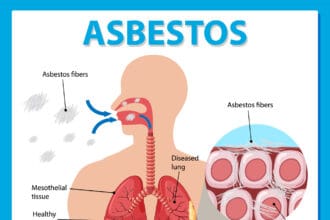Biomarkers have revolutionized breast cancer treatment monitoring, ushering in a new era of approaches and methods. These remarkable biological indicators offer invaluable insights into the progression of diseases, the response to treatments, and the classification of patients.
In this article, we will delve into the significance of biomarkers in clinical research, explore the diverse types of biomarkers utilized in trials, and elucidate their crucial role in selecting and classifying patients.
What are biomarkers?
Biomarkers, in simple terms, are measurable biological characteristics that can be objectively evaluated and quantified. They provide essential information about the physiological state of an individual, such as the presence of a disease, its severity, and the response to a specific treatment. By analyzing biomarkers, clinicians and researchers gain deeper insights into the underlying mechanisms of diseases, paving the way for more targeted and effective interventions.
Breast cancer treatment monitoring with biomarkers
In the context of breast cancer, where disease develops with the uncontrolled growth and proliferation of cancer cells, the biomarkers that monitor the disease’s development include CA15-3, CA27.29, and thymidine kinase activity.
CA15-3 stands for Cancer Antigen 15-3. It is a protein found in normal breast cells and elevated in the blood in some people with invasive breast cancer.This is not because it causes cancer – rather, it is shed by the tumor cells that enter the blood. It can be done with a blood sample drawn from the vein of the patient’s arm.
CA27.29 stands for Cancer Antigen 27.29. It is a high molecular weight glycoprotein, and alongside CA 15-3, it is a marker for breast cancer, albeit one that is not as sensitive. While results of CA27.29 tests are generally concordant with those of CA15-3 tests, they should not be interpreted interchangeably.
Thymidine kinase – particularly its isozyme thymidine kinase 1 – is another key biomarker for breast cancer. As a newer and less well-studied biomarker, TK1 activity levels in the blood of breast cancer patients can provide some insight into the development of the disease because of TK1’s role in cell proliferation. Particularly, TK1 is essential in the cell cycle, and as breast cancer develops, measuring TK1 activity levels can provide information on the speed at which cells are dividing. For example, decreasing TK1 activity in the blood samples of patients can have the potential to be an indicator related to the effectiveness of treatment therapies. Lower TK1 activity may also be correlated with lower aggression of the cancer in certain cases.
By regularly measuring and analyzing these biomarkers – namely their activity levels – with the use of tumor marker tests, clinicians can track the course of the disease and evaluate its response to specific treatments. It is a dynamic approach that is made accessible as biomarker testing can sometimes be done with a simple blood test, but these tests should not be done in isolation for the most precise monitoring of disease progression.
How biomarkers are revolutionizing breast cancer treatment monitoring
Biomarkers can be used as a monitoring tool during breast cancer treatment, and they can provide valuable insights in the development of the disease as well as the effectiveness of therapies. Their most revolutionary feature is how accessible testing is – which can be done with a sample of blood from patients. Testing can be easily incorporated into regular check-ups at lower costs compared to standard screening procedures. As part of blood tests, these biomarkers are also easy to obtain, allowing patients to avoid invasive procedures such as tissue biopsies.
Aside from working with end users, the use of biomarker testing can also produce new insights for researchers and clinicians when it comes to treatment development. Biomarkers can help them identify surrogate endpoints, providing a more practical way to access treatment outcomes and courses of treatment. With more data, researchers can potentially streamline the evaluation process and expedite the development of new therapies and solutions.
While biomarkers present valuable information about the development of breast cancer throughout treatment, clinicians use them with other monitoring methods to ensure they get a comprehensive view of the situation. This is because breast cancer is a multifaceted and complex disease, and the use of other screening tools (such as mammography) and clinical examinations can minimize knowledge gaps. Histopathological analysis of biopsy samples also remains a cornerstone in breast cancer disease monitoring.
The outlook of biomarkers
The future of biomarker usage and testing in breast cancer monitoring is highly promising. With ongoing research and technological advancements, clinicians and researchers can continue to expand their knowledge of how these biomarkers function, their correlation with the treatment effectiveness, and identify areas for further investigation. All this can lead to realizing the full potential of these biomarkers – and new ones yet to be uncovered – to improve patient outcomes in the years to come.








